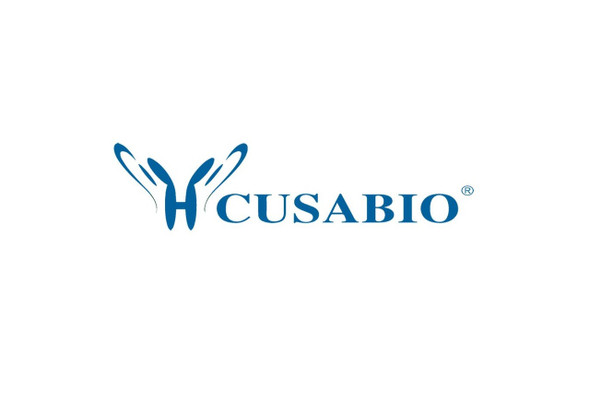Cusabio Active Proteins
Recombinant Human Fructose-2, 6-bisphosphatase TIGAR protein (TIGAR) (Active) | CSB-AP000111HU
- SKU:
- CSB-AP000111HU
- Availability:
- 5 to 10 Working Days
Description
Recombinant Human Fructose-2,6-bisphosphatase TIGAR protein (TIGAR) (Active) | CSB-AP000111HU | Cusabio
Protein Description: Full Length
Alternative Name (s) : EC 3.1.3.46, TP53-induced glycolysis regulatory phosphatase
Gene Names: TIGAR,C12orf5
Research Areas: Cell Biology
Species: Homo sapiens (Human)
Source: E.Coli
Tag Info: C-terminal TAT-tagged
Expression Region: 1-270aa
Sequence Info: MARFALTVVRHGETRFNKEKIIQGQGVDEPLSETGFKQAAAAGIFLNNVKFTHAFSSDLMRTKQTMHGILERSKFCKDMTVKYDSRLRERKYGVVEGKALSELRAMAKAAREECPVFTPPGGETLDQVKMRGIDFFEFLCQLILKEADQKEQFSQGSPSNCLETSLAEIFPLGKNHSSKVNSDSGIPGLAASVLVVSHGAYMRSLFDYFLTDLKCSLPATLSRSELMSVTPNTGMSLFIINFEEGREVKPTVQCICMNLQDHLNGLTETR+GGYGRKKRRQ
Biological Activity: Fully biologically active when compared to standard. The biological activity determined by its ability to protect U2OS cells from apoptosis induced by hydrogen peroxide is in a concentration range of 0.1-5.0 μg/ml, after pretreating with rHuTIGAR-TAT for 4 hours.
MW: 31.7 kDa
Purity: >96% as determined by SDS-PAGE and HPLC.
Endotoxin: Less than 1.0 EU/µg as determined by LAL method.
Relevance: Fructose-bisphosphatase hydrolyzing fructose-2,6-bisphosphate as well as fructose-1,6-bisphosphate (PubMed:19015259) . Acts as a negative regulator of glycolysis by lowering intracellular levels of fructose-2,6-bisphosphate in a p53/TP53-dependent manner, resulting in the pentose phosphate pathway (PPP) activation and NADPH production (PubMed:16839880, PubMed:22887998) . Contributes to the generation of reduced glutathione to cause a decrease in intracellular reactive oxygen species (ROS) content, correlating with its ability to protect cells from oxidative or metabolic stress-induced cell death (PubMed:16839880, PubMed:19713938, PubMed:23726973, PubMed:22887998, PubMed:23817040) . Plays a role in promoting protection against cell death during hypoxia by decreasing mitochondria ROS levels in a HK2-dependent manner through a mechanism that is independent of its fructose-bisphosphatase activity (PubMed:23185017) . In response to cardiac damage stress, mediates p53-induced inhibition of myocyte mitophagy through ROS levels reduction and the subsequent inactivation of BNIP3. Reduced mitophagy results in an enhanced apoptotic myocyte cell death, and exacerbates cardiac damage (By similarity) . Plays a role in adult intestinal regeneration; contributes to the growth, proliferation and survival of intestinal crypts following tissue ablation (PubMed:23726973) . Plays a neuroprotective role against ischemic brain damage by enhancing PPP flux and preserving mitochondria functions (By similarity) . Protects glioma cells from hypoxia- and ROS-induced cell death by inhibiting glycolysis and activating mitochondrial energy metabolism and oxygen consumption in a TKTL1-dependent and p53/TP53-independent manner (PubMed:22887998) . Plays a role in cancer cell survival by promoting DNA repair through activating PPP flux in a CDK5-ATM-dependent signaling pathway during hypoxia and/or genome stress-induced DNA damage responses (PubMed:25928429) . Involved in intestinal tumor progression (PubMed:23726973) . {ECO:0000250|UniProtKB:Q8BZA9, ECO:0000269|PubMed:16839880, ECO:0000269|PubMed:19015259, ECO:0000269|PubMed:19713938, ECO:0000269|PubMed:22887998, ECO:0000269|PubMed:23185017, ECO:0000269|PubMed:23726973, ECO:0000269|PubMed:23817040, ECO:0000269|PubMed:25928429}.
PubMed ID: 11062477; 14702039; 15489334; 16140933; 16839880; 17525332; 19713938; 19015259; 19608861; 21269460; 21820150; 22887998; 23185017; 23817040; 23726973; 25928429;
Notes: Repeated freezing and thawing is not recommended. Store working aliquots at 4℃ for up to one week.
Function: Fructose-bisphosphatase hydrolyzing fructose-2,6-bisphosphate as well as fructose-1,6-bisphosphate
Involvement in disease:
Subcellular Location: Cytoplasm, Nucleus, Mitochondrion
Protein Families: Phosphoglycerate mutase family
Tissue Specificity: Expressed in the brain (PubMed:22887998) . Expressed in breast tumors (PubMed:21820150) . Expressed in glioblastomas (PubMed:22887998) .
Paythway:
Form: Lyophilized powder
Buffer: Lyophilized from a 0.2 m filtered 30 % Acetonitrile, 0.1% TFA
Reconstitution: We recommend that this vial be briefly centrifuged prior to opening to bring the contents to the bottom. Please reconstitute protein in deionized sterile water to a concentration of 0.1-1.0 mg/mL.We recommend to add 5-50% of glycerol (final concentration) and aliquot for long-term storage at -20℃/-80℃. Our default final concentration of glycerol is 50%. Customers could use it as reference.
Uniprot ID: Q9NQ88
Uniprot Entry Name: TIGAR_HUMAN
HGNC Database Link: HGNC
UniGene Database Link: UniGene
KEGG Database Link: KEGG
STRING Database Link: STRING
OMIM Database Link: OMIM









